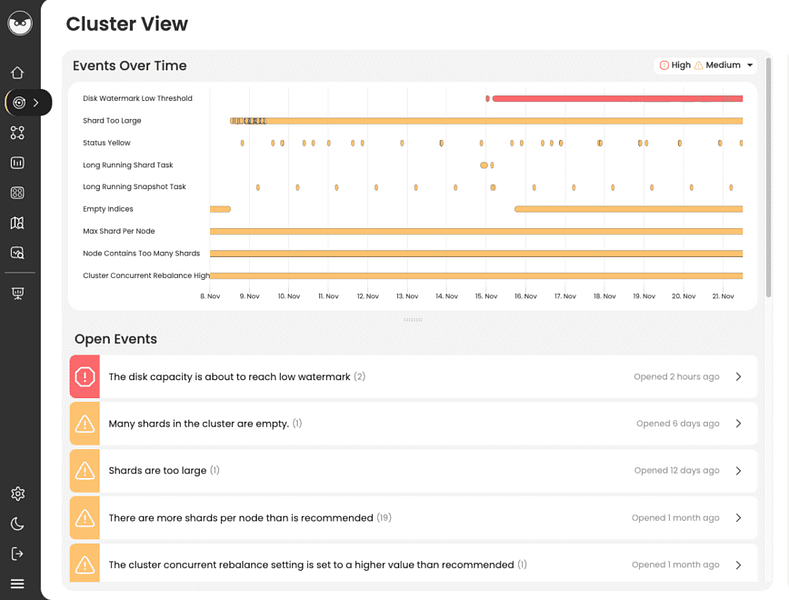Opster Team
Last updated: Oct 30, 2022
| 1 min readIn addition to reading this guide, we recommend you run the Elasticsearch Health Check-Up. It will detect issues and improve your Elasticsearch performance by analyzing your shard sizes, threadpools, memory, snapshots, disk watermarks and more.The Elasticsearch Check-Up is free and requires no installation.
To manage all aspects of your OpenSearch operation, you can use Opster’s Management Console (OMC). The OMC makes it easy to orchestrate and manage OpenSearch in any environment. Using the OMC you can deploy multiple clusters, configure node roles, scale cluster resources, manage certificates and more – all from a single interface, for free. Check it out here.
Overview
In OpenSearch, restore refers to the snapshot restore mechanism, which returns indices or clusters to a previous, saved state. You can restore the entire cluster from the snapshot or restore an individual index or selected indices.
Examples
To restore the whole snapshot:
POST /_snapshot/my_backup/snapshot-01-11-2019/_restore
To restore an individual index:
POST /_snapshot/my_backup/snapshot-01-11-2019/_restore
{
"indices": "my_index"
}Notes
- If you are using a security tool like Searchguard, the snapshot restore capability must be enabled in opensearch.yml. Otherwise, it will throw a security exception.
Common issues
- If an index or indices already exist with the same names as those you are going to restore, they need to either be closed or deleted before you can restore from a snapshot. Otherwise, the restore operation will fail due to an error that the index already exists.
Find & fix Elasticsearch problems
Opster AutoOps diagnoses & fixes issues in Elasticsearch based on analyzing hundreds of metrics.
Fix Your Cluster IssuesConnect in under 2 minutes

Jose Rafaelly
Head of System Engineering at Everymundo





